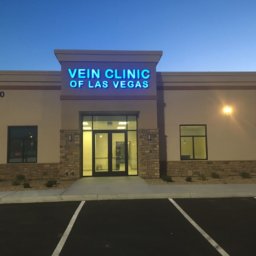Vein issues, particularly varicose and spider veins, are common concerns among women. These conditions not only affect appearance but can also lead to discomfort and serious health issues if left untreated. Fortunately, various vein treatments are available today, each tailored to different needs and conditions. However, it is crucial to receive treatment from a qualified medical doctor to ensure safety and effectiveness.
Types of Vein Treatment Available for Women
- Sclerotherapy
- What It Is: Sclerotherapy is a minimally invasive procedure commonly used to treat spider veins and smaller varicose veins. It involves injecting a solution directly into the affected veins, causing them to collapse and eventually be absorbed by the body.
- Benefits: Sclerotherapy is effective, quick, and requires no downtime, making it a popular choice for many women.
- Laser Therapy
- What It Is: Laser therapy uses focused light energy to target and treat veins. The heat from the laser causes the vein to fade away over time.
- Benefits: This non-invasive treatment is ideal for smaller spider veins and is often used on the face and legs. It requires no incisions or needles, which can be appealing to those who prefer a more conservative approach.
- Endovenous Laser Treatment (EVLT)
- What It Is: EVLT is a more advanced form of laser therapy used for larger varicose veins. A laser fiber is inserted into the vein, delivering energy that seals the vein shut.
- Benefits: This procedure is minimally invasive, highly effective, and typically requires little recovery time. It is often performed under local anesthesia.
- Radiofrequency Ablation (RFA)
- What It Is: RFA involves using radiofrequency energy to heat and close off varicose veins. A catheter is inserted into the vein, and the heat causes the vein walls to collapse and seal.
- Benefits: RFA is similar to EVLT in effectiveness and recovery time. It’s an excellent option for those with larger or more symptomatic varicose veins.
- Ambulatory Phlebectomy
- What It Is: This procedure involves making small incisions to remove varicose veins close to the skin’s surface. It is usually performed under local anesthesia.
- Benefits: Ambulatory phlebectomy is highly effective for bulging veins and provides immediate results. The recovery time is short, and the procedure leaves minimal scarring.
- Vein Stripping and Ligation
- What It Is: A more traditional surgical approach, vein stripping involves removing the affected vein through small incisions. It’s typically used for more severe cases of varicose veins.
- Benefits: While more invasive, this procedure is effective for larger, problematic veins that do not respond to other treatments.
The Importance of Receiving Treatment from a Medical Doctor
When considering vein treatment, it’s essential to seek care from a qualified medical doctor, such as a vascular surgeon or a vein specialist. Here’s why:
- Expertise and Training
- Medical doctors specializing in vein treatment have undergone extensive training in diagnosing and treating vascular conditions. Their expertise ensures that you receive the most appropriate and effective treatment for your specific condition.
- Accurate Diagnosis
- Vein issues can sometimes be a sign of underlying health problems. A medical doctor can conduct a thorough evaluation to ensure that the treatment plan addresses all aspects of your health, not just the visible veins.
- Safety
- Vein treatments, while generally safe, carry some risks, such as infection, blood clots, or adverse reactions to anesthesia. A medical doctor is equipped to manage these risks and provide the highest standard of care.
- Long-Term Results
- Medical doctors use evidence-based practices to ensure that the results of your vein treatment are both effective and long-lasting. They can also provide follow-up care and monitoring to prevent recurrence.
- Comprehensive Care
- Beyond the cosmetic benefits, treating vein issues is often necessary to prevent complications like ulcers, chronic pain, or deep vein thrombosis. A medical doctor can offer a holistic approach that considers both aesthetic and health-related outcomes.
Conclusion
Vein treatment offers a range of options for women looking to improve both their appearance and health. Whether through sclerotherapy, laser therapy, or more advanced procedures, there is a solution for every type of vein issue. However, it is crucial to seek treatment from a qualified medical doctor to ensure that the care you receive is safe, effective, and tailored to your unique needs. By doing so, you can achieve the best possible results and enjoy a life free from the discomfort and risks associated with untreated vein conditions.

